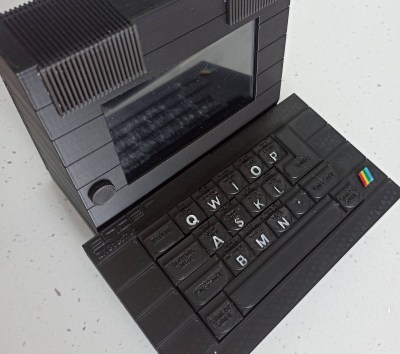
[SrBlonde]’s wonderful micro Spectrum project has only the essential inputs, which makes for an interesting-looking keyboard for sure. Inside you’ll find an Orange Pi Zero 2 board loaded with Batocera so [SrBlonde] can play all their favorite childhood games on the 5″ IPS display.
Something else that’s interesting is that the switches are a mix of blues and blacks — clickies and linears. I can’t figure out how they’re distributed based on the numbers in the components list, but I could see using clickies on the alphas and linears everywhere else (or vice versa). At any rate, it’s a great project, and you can grab the STL files from Thingiverse if you’re so inclined.
Zoom Keyboard Keeps It Simple
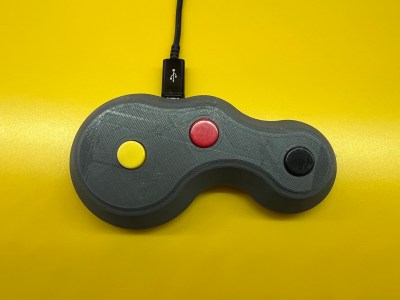
[Olga] is using this bad boy in an educational setting, so the hot keys are set up as follows: raise/lower hand, mute/un-mute audio, and show/hide the in-meeting chat panel. Simple plus useful equals elegant in my book. This keyboard is built on the ATtiny85, and you can find more details on GitHub including the code.
I’m quite drawn to the interesting design of this one, and I’m not quite sure what it reminds me of. Maybe an upside-down Steam logo. What do you think it looks like?
The Centerfold: Peel Slowly and See
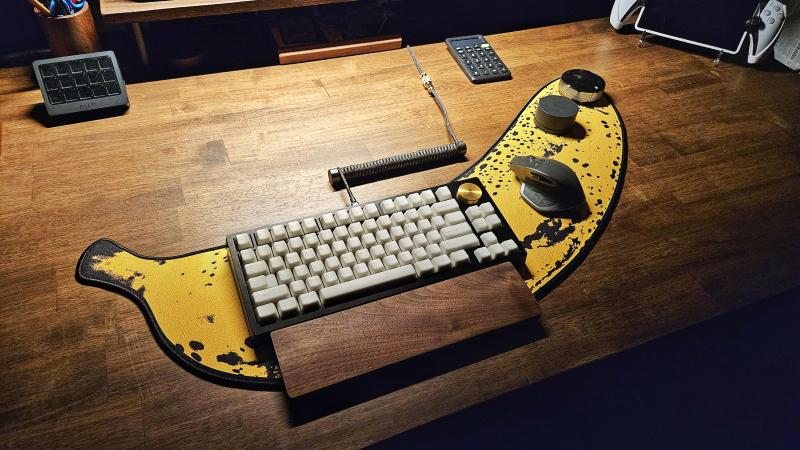
Do you rock a sweet set of peripherals on a screamin’ desk pad? Send me a picture along with your handle and all the gory details, and you could be featured here!
Historical Clackers: the Yetman Transmitting Typewriter
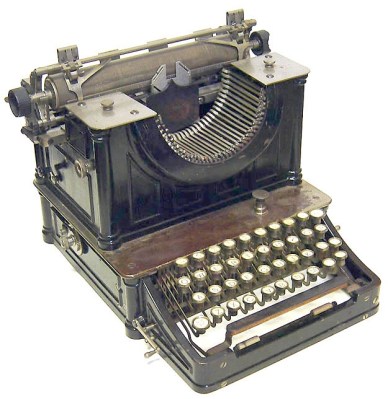
The remarkably heavy Yetman Transmitting Typewriter of 1903 was a bit like a laptop of its time in that you could hook into the telegraph wires and send a message from anywhere. (Well, anywhere with telegraph wires.) And, at the same time, if you wanted, you could produce a hard copy of that message. Or, you could just use the thing as a normal typewriter.
And as far as normal typewriters go, the Yetman isn’t too outstanding aside from its transmitting capabilities. In order to transmit, you simply pressed the lever on the left side of the keyboard. To engage the typebars, you pressed a lever on the right.
You may have noticed the shelf above the keyboard with the strange knob. That is a Morse keyer for sending messages the traditional way. Many sources claimed that the Yetman could also receive transmissions, but that’s not the case.
There are many mysteries surrounding the Yetman, its inventor, and the company’s president, which you can read all about on the Oz Typewriter blog.
ICYMI: KanaChord, the Japanese Macro Pad
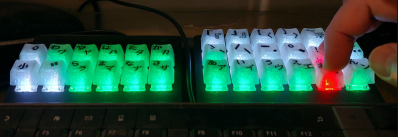
It’s simple, really, as long as you know your table of Kana — that’s how the Hirigana and Katakana elements of the Japanese language are collectively known. There’s also the Kanji, or Chinese characters that round it all out. This version of the KanaChord lacks the Kanji, but the KanaChord Plus Keyboard will have 6,000+ characters.
KanaChord uses color to differentiate between character types, to indicate Kana mode, and even provide error feedback whenever an invalid chord is pressed. Inside you’ll find a Raspberry Pi Pico and an Adafruit NeoKey 5×6 Ortho Snap-Apart keyboard PCB, which simplifies things considerably. Underneath those cool 3D-printed keycaps are thirty Cherry MX switches of unknown color, but which I choose to believe are blue.
Got a hot tip that has like, anything to do with keyboards? Help me out by sending in a link or two. Don’t want all the Hackaday scribes to see it? Feel free to email me directly.

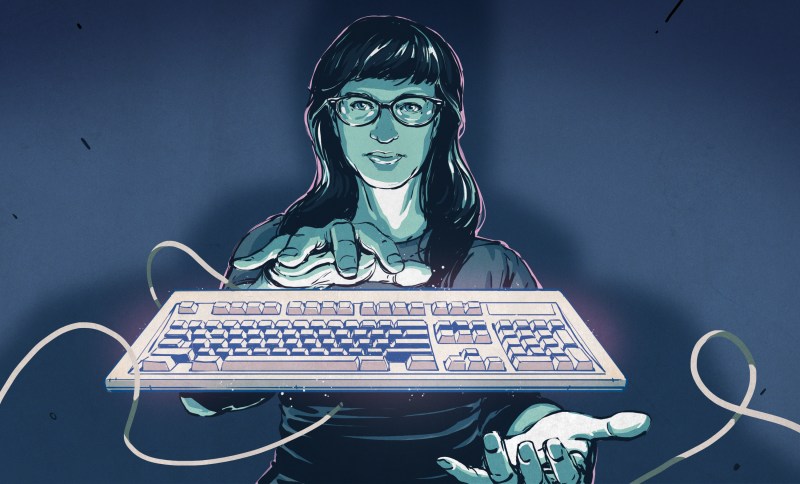














It’s been a long time, but wasn’t QZIP more popular than QAOP on the spectrum? And the less said about games that used the cursors the better…
Kristina, thanks for the ICYMI! The key switches are Cherry MX RGBs. Their bodies are translucent plastic, which allow the light from the Neopixels to shine through easily.
The transmitting typewriter is fascinating. I have been thinking lately, more akin to doing something like sci-fi worldbuilding, about some kind of post-Victorian computing technology. Something akin to the Transmitting Typewriter would fit right in to the system I’m imagining. I continue to be amazed at some of the capabilities of some of the technologies attainable by the industrial and technological capabilities of the late Victorian era.
I set up knorvay/norwii wireless presenters for zoom. The buttons are programmable. Just need to hop in the settings on zoom and make the shortcuts global in case the window is not in focus.
Any idea what those devices are on the tip of the deskmat? Looks like some nice rotary encoder …